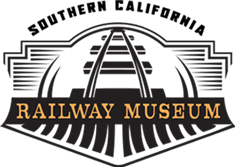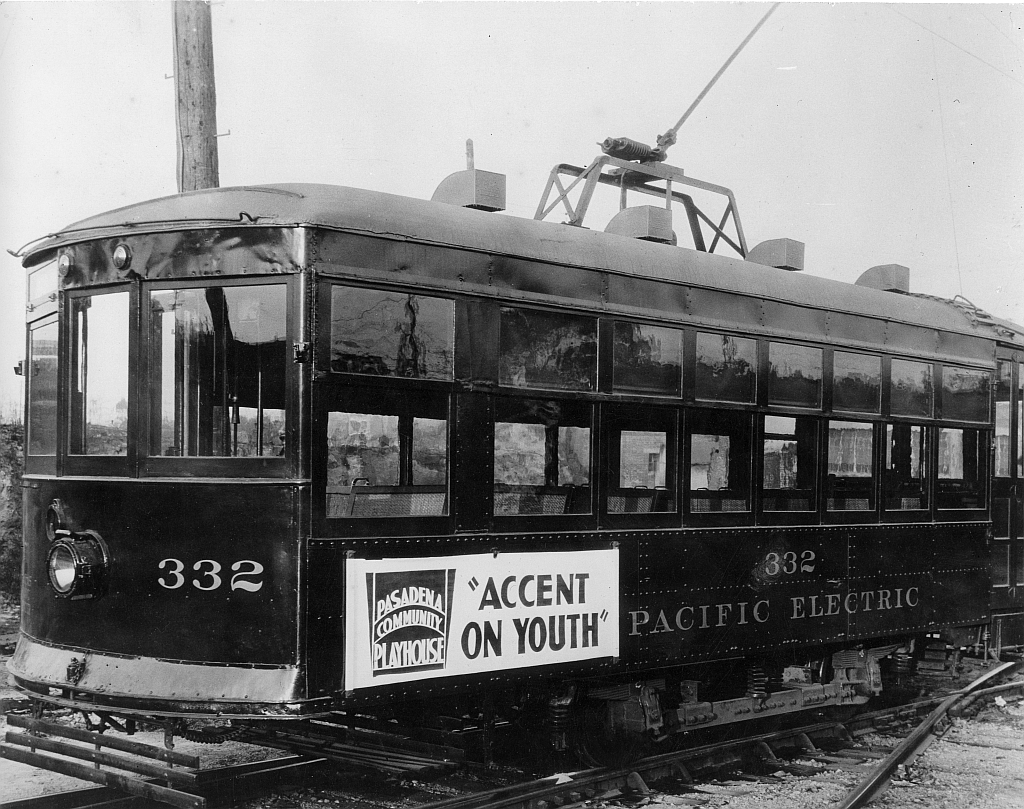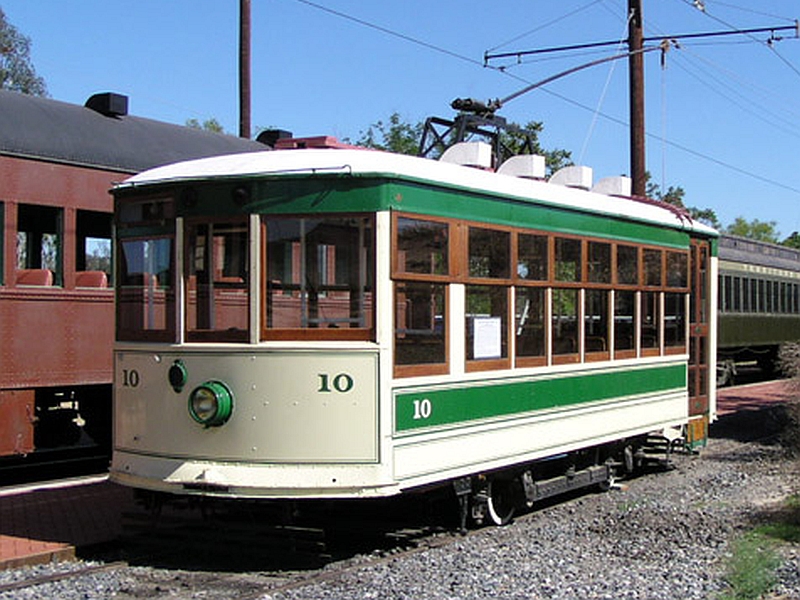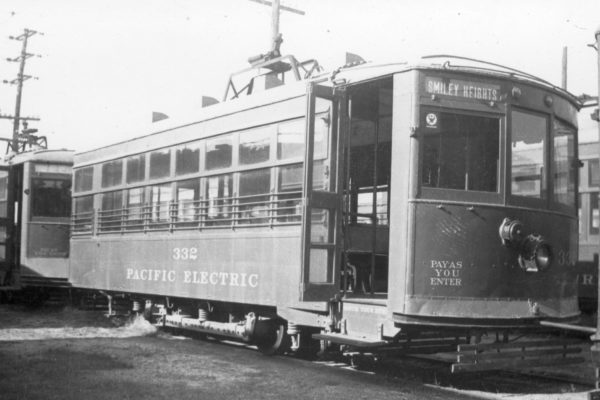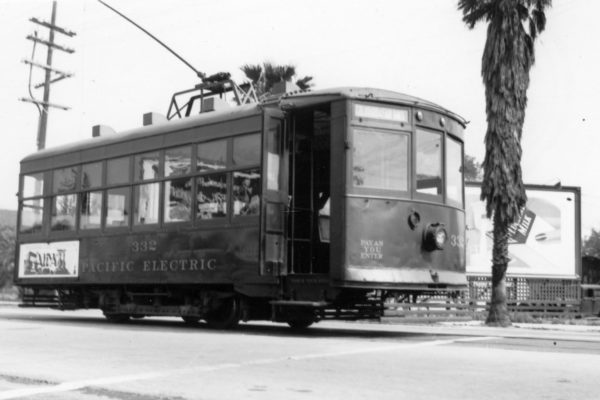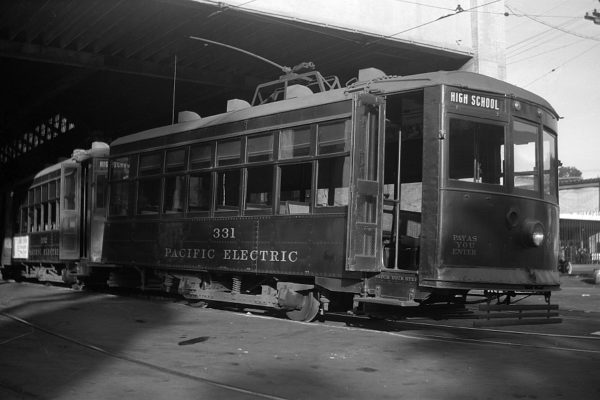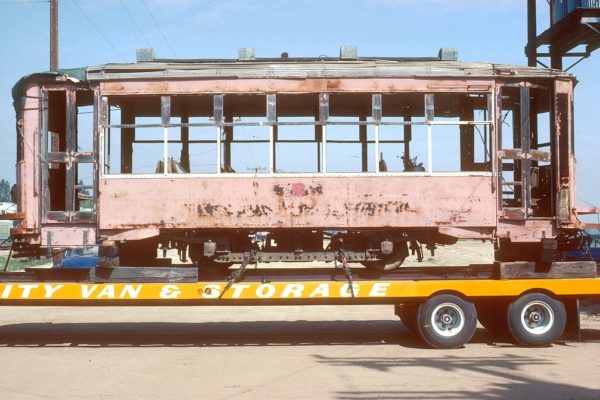The “Birney Safety Car” was designed and patented by engineers Charles Birney and Joseph Bosenbury. Birney was affiliated with engineering services company Stone & Webster, who operated several streetcar companies in the United States. The ‘Birney’ was the first successful standardized trolley used by the industry with over 6000 built. Several companies manufactured the cars, with a majority by the J.G. Brill Company and subsidiary American Car Company. The cars were designed to be mass produced and inexpensive to the consumer. Lightweight with steel frames, wooden car bodies, and compact with a length of 28 feet, the cars ride on a single two axle truck and powered by two motors. The cars accelerate quickly and are rated for a top speed of 25 miles-per-hour. Compared to larger double trucked cars, Birneys consume less power and reduce wear to the track. Birneys are also designed for one person operation, thus saving operating costs. New safety features were introduced including automatic ‘Dead Man” braking if the operator became incapacitated the inability to open the automatic doors without the brakes applied. While the economics of the cars was appreciated by streetcar companies, riders did not care for the cars as single truck cars offer a bouncy ride.
The Pacific Electric Railway ordered twenty Birneys from the J.G. Brill Company, Philadelphia, numbering them 350-369. These cars entered service on low revenue local lines. PE was very impressed by the low operating cost compared to older and larger eight wheeled city cars. Fifteen more cars were ordered in early 1920, with an additional twenty ordered later in the year. The original twenty cars were renumbered to 320-339, with the newer cars numbered 340-388.
The Birneys saw local service in cities across the PE system, replacing older and larger city cars. Some of the cities included Pasadena, Pomona, San Bernardino, Riverside, Redlands, Santa Monica, Long Beach, and San Pedro. There is not doubt that the Birneys prolonged rail service on local routes. Ultimately, bus service replaced local lines as maintenance on the track and overhead wire was expensive.
Pacific Electric 332 spent most of its career in Redlands, until rail operations were replaced by buses in 1936. The car was later assigned to the local lines in Pasadena and retired in 1941 when the local lines were replaced bus service. Fortunately, MGM Studios bought four of them where they starred in such movies as “Singin’ in the Rain”. A famous scene in the movie has Gene Kelly running across the roof of a Birney Car and jumping into convertible driven by Debbie Reynolds. Cars 331 and 332 were purchased the the Orange Empire Trolley Museum from MGM in the 1960’s and brought to the museum in Perris, California.
Car 332 was leased to the Old Pueblo Trolley in Tucson, Arizona in 1985. 332 was restored to full operation by the OPT staff and operated for the first time in 1991. During the restoration, 332 was painted into the former Tucson Rapid Transit cream and green paint scheme and renumbered car 10 to reflect one of the Birneys that ran in the 1920’s in Tucson. The OPT opened for service on April 17, 1993. PE 332/OPT 10 operated in Tucson until March 1995, when it was returned to the museum. Since the cars return, it still masquerades as Tucson Rapid Transit 10 and sees regular service at the museum along with sister car 331.
Generous donations to the SCRM Red Car Fund keeps streetcars like PE 332 in operation for the enjoyment of museum visitors and facilitates the preservation and restoration of other cars in the museum collection.
